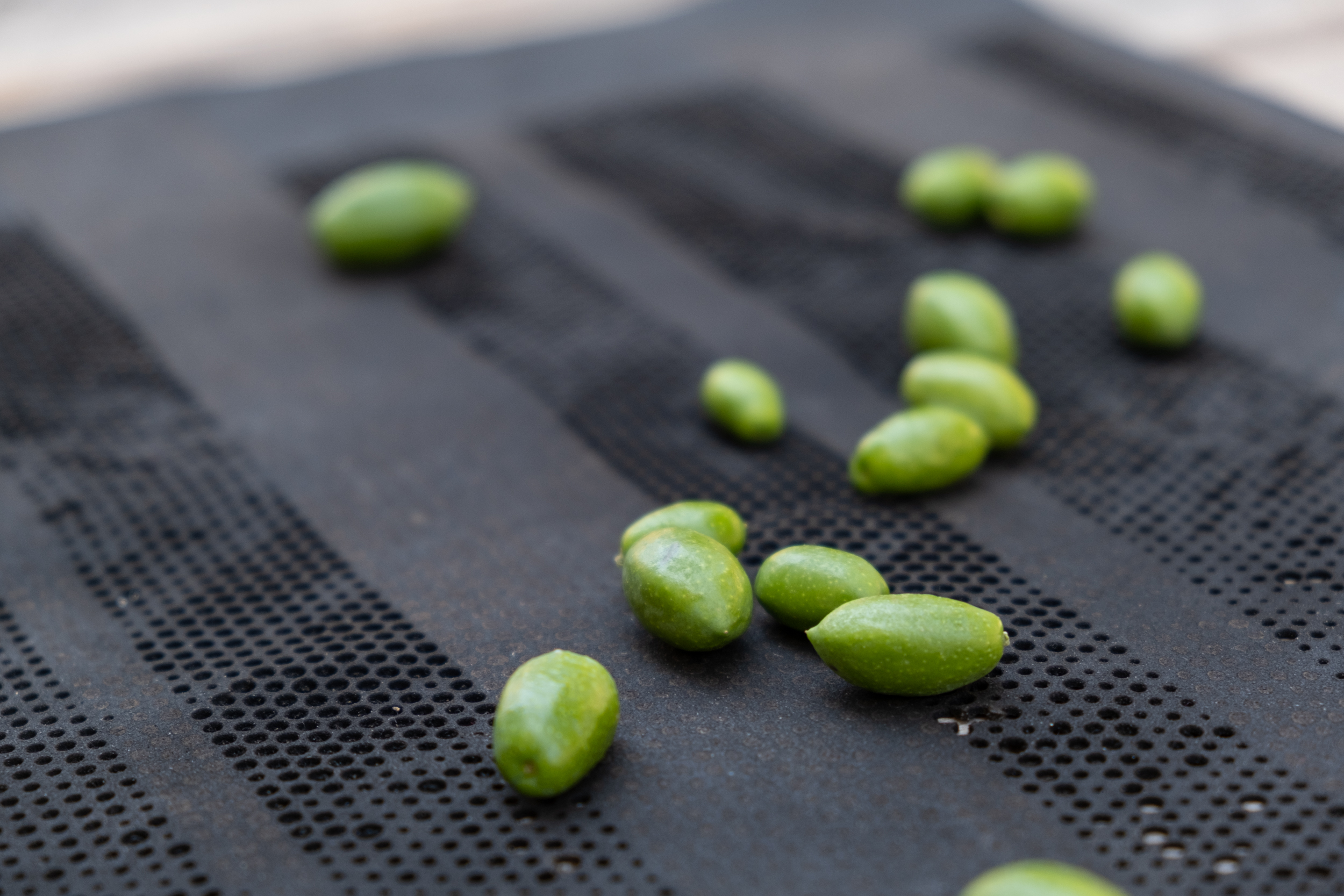
Businesses have started to explore ways to reuse their products to decrease energy costs and labour. The take-make-dispose economy couldn’t find new ways to sustain the old habits since the old concepts and linear ways of thinking cannot propose new questions and new answers. The limits of linear consumption have already been exceeded. The end of life concept can be changed with the help of circular thinking. Improvements in material design and modularity could be the heart of design practices.
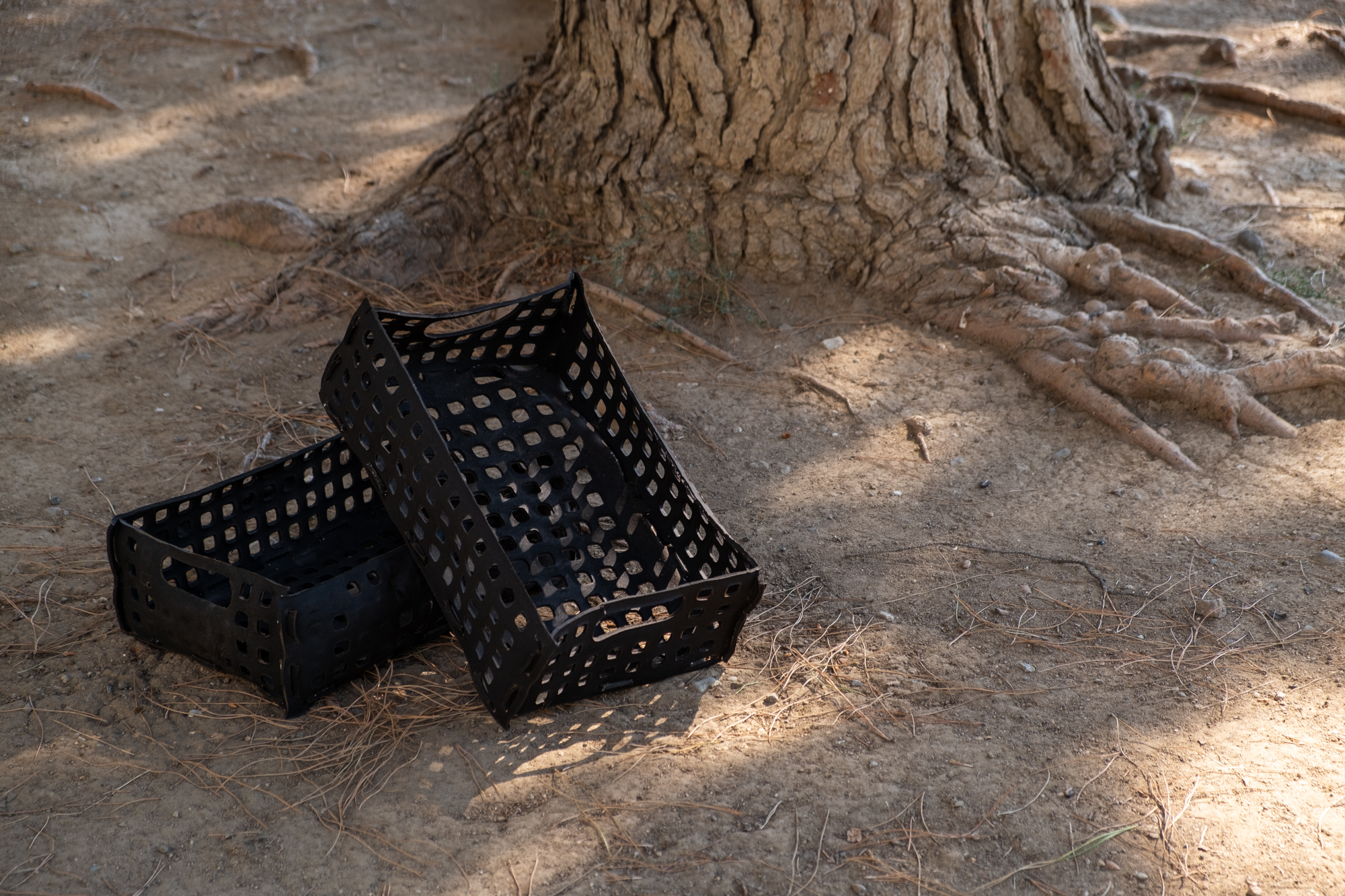
Since the Pomastic has many different material qualities, the production methods differ a lot too. Most of the methods that I experienced and used are quite unlike the traditional methods. As an example, if the mixture were denser and mushier, I would make a mold to plaster the pomastic on, but if it were too liquid, I would make the mold according to that. To try out the possibilities of the pomastic rapidly, I began to examine the objects and textures around me to be used as molds.

… Additionally pomace in its raw state is a non-homogeneous material which contains olive skin, seed particles and leaves of the tree. Also, the particle sizes are quite different when it is raw. While working with it, it needs to be grinded and sieved to obtain a homogeneous substance. Even after the homogeneous powder is obtained, the material retains its richness of mixed ingredients. And since the ingredient ratios in each batch changes, the material will have slightly different qualities when it is obtained from different factories or facilities. This situation also makes the material a bit harder to work with. Standardization of the material becomes more difficult. However, I believe having a non-standardized material makes the process more flexible and freer to experience and try out new things, the things which are not usually a part of the traditional design practice.
Its (pomastic’s) potential to be used in various product categories with small changes in the recipe and the manufacturing process. When I joined the project, the former team members had already produced a significant number of material samples. So, my design process started with the assessment of the existing material swatch. When the materials were introduced to me for the first time, I was fascinated by the sensorial richness that the material provides. Some of the samples were thin and fragile as paper, some of them were thick and strong as wood, some were flexible, some were firm, some were so dark that it seemed to absorb all the light that it was exposed to, yet some were transparent enough to reveal what is underneath. In addition to its visual and tactile qualities, its smell was also very unique and intense. Although I am not originally from İzmir, people’s reaction to Pomastic showed me that this smell was deeply embedded in the sensorial, collective memory of the region.

The olive pomace we work with is not standardized. We collect it from different olive oil producers. So each batch comes with different qualities. Some are more dry, whereas some contain more oil. They come in different grain sizes. Depending on the environment of extraction, they are mixed with other substances. One of the first challenges was to interpret the effects of these differences on the outputs and to more or less standardize the materials we collected. // Serdar Asut

Olive pomace is a residue of olive oil. After the experiences I have gained as a designer with Pomastic, I could easily approach pomace as data. Pomace can be perceived as local data since it belongs to the Mediterranean; natural data since it is a natural material and part of an olive tree, and cultural data since it is a part of many interdependent parts of the complex relations including human, nature, objects, activities etc. Nature covers everything and we, as human beings, are part of nature. Culture phenomena can be seen as an interaction between nature and humans or domination over nature. Not only as designers but also as humans, we should remember that natural conditions forced us to build or design against nature to survive in nature but the pomace project also proves that there could be another option. A designer could approach pomace as natural and cultural data and turn it into Pomastic based design ideas. A designer can be inspired by agriculture which is also part of the culture covering humans’ acts towards land. A designer can be aware of natural and cultural layers to design accordingly while working with pomace.
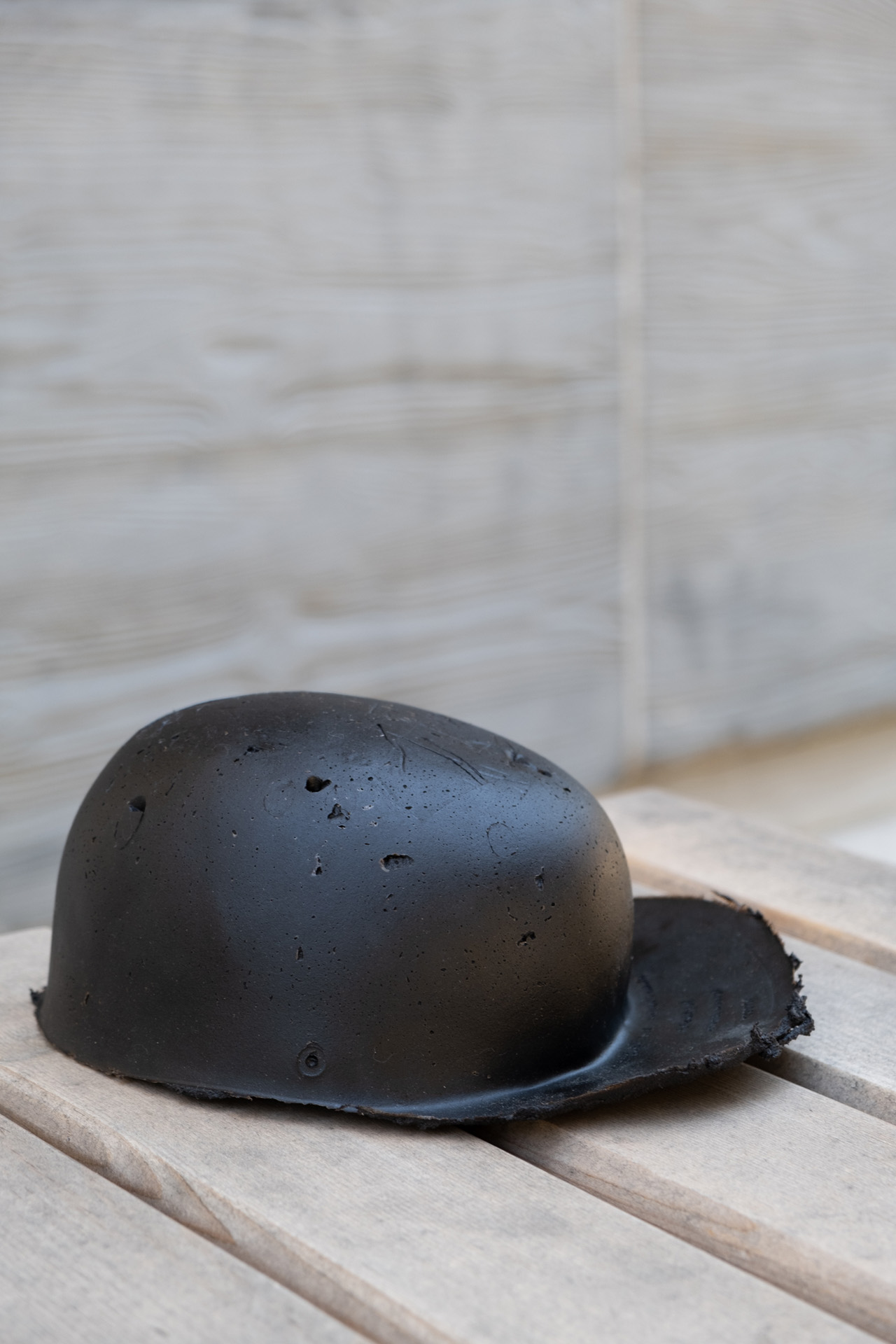
One of the unique things about pomace itself was firstly the smell of it. Olive pomace has the distinctive and authentic olive-like smell which carries the impression of the Aegean culinary culture. The region has a large population of olive trees. It is even possible to see olive trees in the streets, near the buildings. Olives are an irreplaceable part of the Aegean breakfast so I believe many people from the region would find the smell relatable. Personally, the olfactory qualities of pomace makes the bioplastic making process more relatable, easier, and familiar to me. Additionally, during the making of the bio-based plastic, the smell changes in each step. Even after the product is completed, the smell lingers ever so faintly. So I would say that the olfactory qualities are a strong part of the experience of this material. Additionally pomace in its raw state is a non-homogeneous material which contains olive skin, seed particles and leaves of the tree. Also, the particle sizes are quite different when it is raw. While working with it, it needs to be grinded and sieved to obtain a homogeneous substance. Even after the homogeneous powder is obtained, the material retains its richness of mixed ingredients. And since the ingredient ratios in each batch changes, the material will have slightly different qualities when it is obtained from different factories or facilities. This situation also makes the material a bit harder to work with. Standardization of the material becomes more difficult. However, I believe having a non-standardized material makes the process more flexible and freer to experience and try out new things, the things which are not usually a part of the traditional design practice.
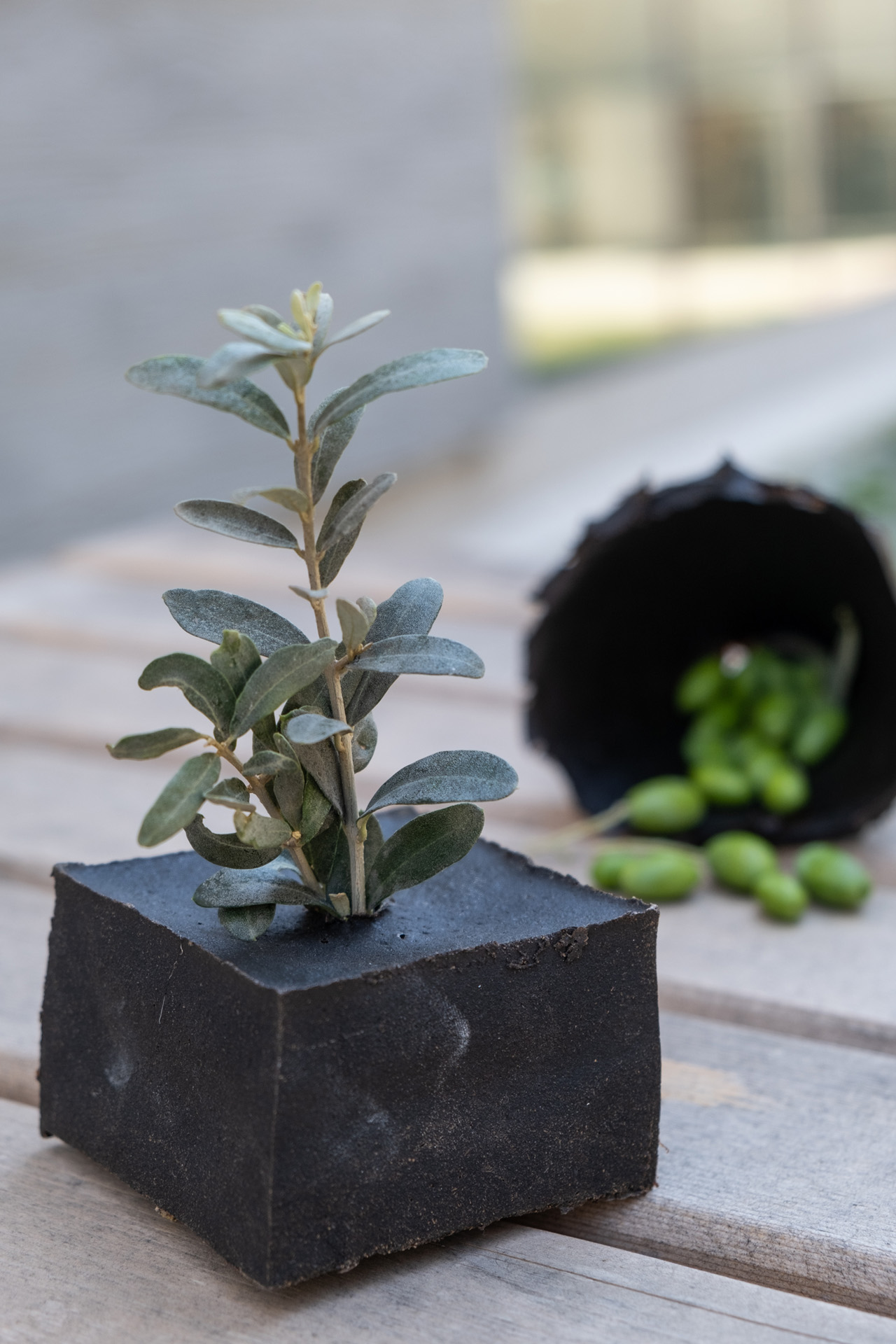
The most striking thing about the design process was its entirely experimental nature. From the beginning to the end each step was a new experience and I was quite surprised. A huge part of the design process was experiencing the substances to prepare the bioplastic and the different mixtures to cook. Becoming familiar to the substances and methods is a vital part of the process. Unlike the traditional design practices and most of the conventional materials used in design, while working with bioplastics, the material itself has to be prepared first. Depending on different mixtures and substances, the qualities of the material changes too, such as becoming more flexible or rigid, shiny, or matte, stiff, or fragile. So, it would not be correct to say that Pomastic is just one material, it is a quite tangible material source which could be altered to create different material qualities.
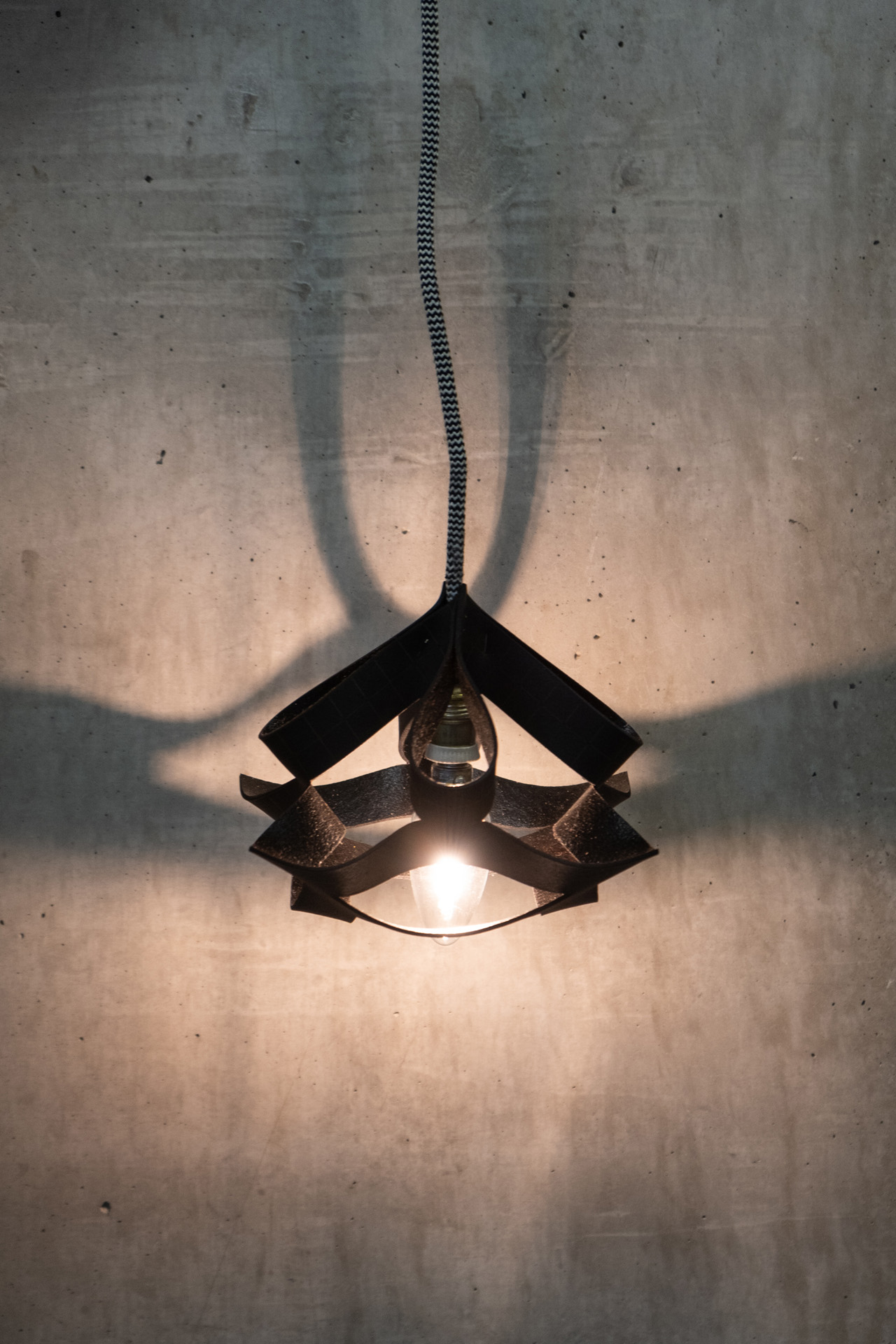
Olive pomace is not a standardized material. The particles of olive pomace have different physical properties. Each bag of pomace that comes out of the factory is different in terms of its colour, hardness and smell. Thus, the melting, boiling and freezing points are diverse. Processes such as mixing, heating, boiling, cooling and freezing change the material properties immediately. A powder of olive pomace turns into a liquid Pomastic sample in a short amount of time, shorter perhaps than the amount of time needed to make a soup. This could be seen as positive feedback since the material can become stronger or lighter; more opaque or more transparent or thinner or thicker as a result of the process. In order to figure out what we can do with various techniques and methods, we ran a lot of experiments and did analyses of positive and negative feedback from the Pomastic*. We did not test the materials but observed them for almost two years. The feedback part made me feel more like a scientist than a designer which could start an interesting discussion about the blurring of the boundaries between design, science and craft.

The natural life cycle of the olive tree, the richness and diversity that it offers is an important source of inspiration for us. Our project, with the slogan of “learning circularity from olive”, suggests that even pomace, i.e., the residue of olive oil, can have an economic value when it is processed with new material knowledge and design thinking. In this way, the waste generated by one system can be the raw material of another and we can go beyond making zero-waste production by adding value to what is accepted to be waste with the help of systematic upcycling logic. Of course, here what is more important than the economic value is the opportunity to challenge the concept of “value” itself by transforming what is considered as “waste” into something “treasured”. I think the generative role of design starts exactly at this point.
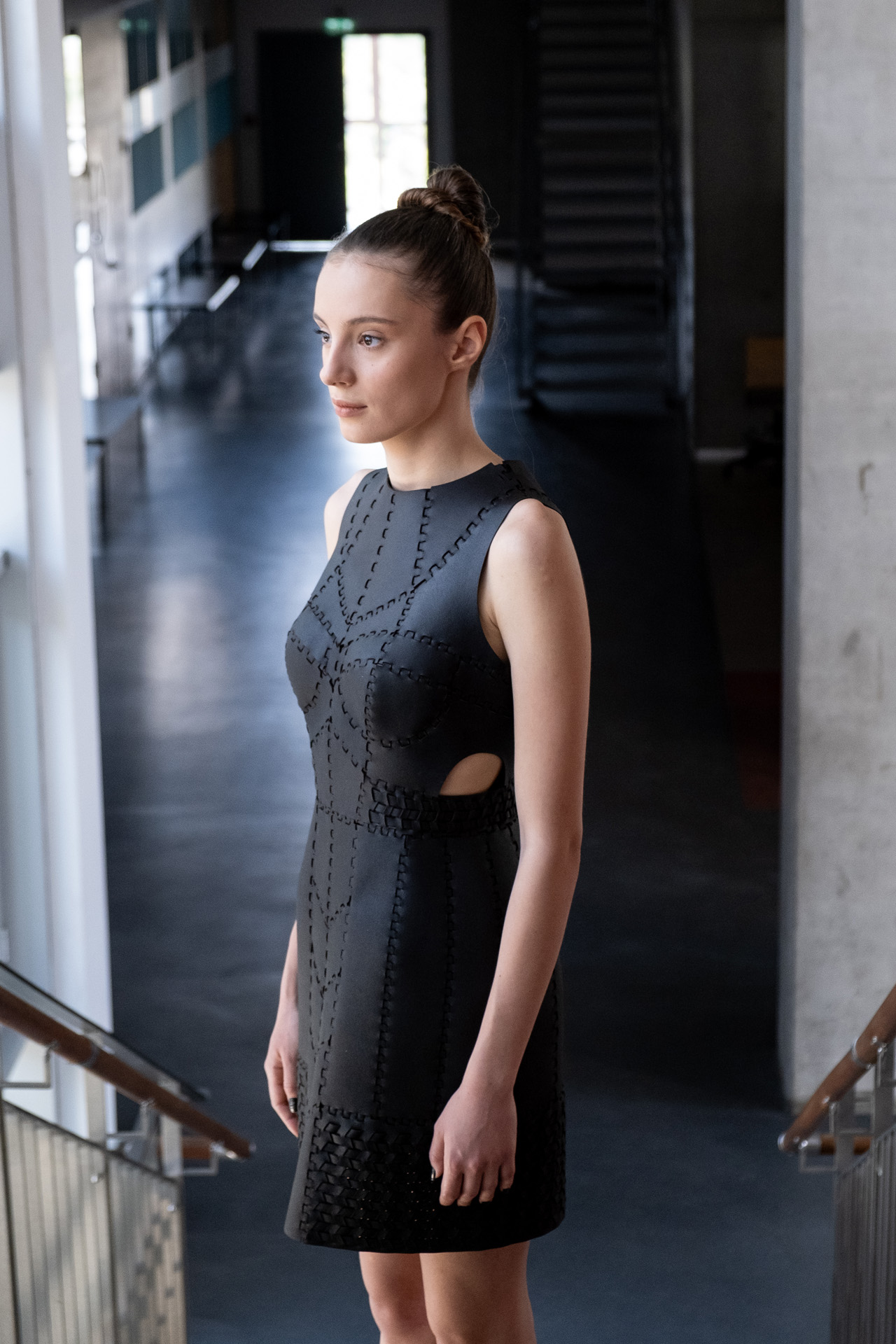
Circular thinking promises a more transparent, responsible and sustainable production and consumption culture. Most of the global problems that we currently face such as ecological disasters, climate crisis, the waste problem and labor exploitation are the undesired outcomes of fast, profit-oriented and linear production systems and the consumption culture that they provoke. This trend can only be reversed with the spread of a slow production and consumption culture and adoption of a post-anthropocentric design approach that emphasizes biodiversity and ecological balance


